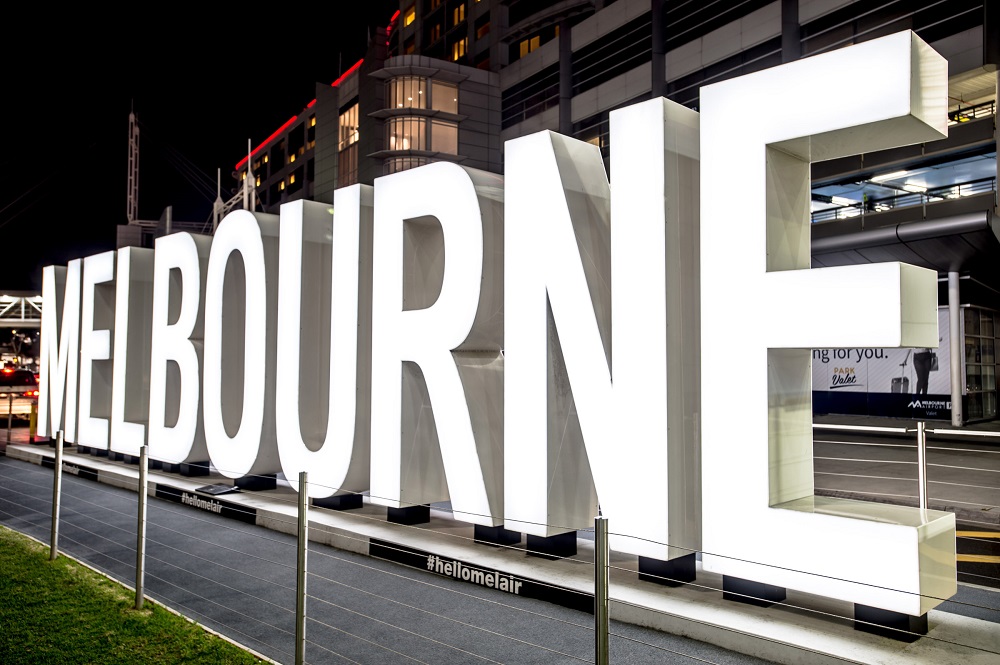Victorians heading off to warmer climates during the Australian winter helped Melbourne Airport establish a new record passenger month as it handled more than 3.3 million international and domestic passengers in July.
Smashing a previous record of 3.2 million passengers in December 2017, the airport also recorded a new busiest day, with 20,193 people touching down on July 15, and a record week for international arrivals, when 131,294 people arrived from July 12 to 18.
Australian airports usually peak during the Christmas-New Year period but Melbourne Airport chief executive Lyell Strambi said July was now rivaling the summer highs.
Figures released by the airport Monday show that international passenger numbers grew by 2.4 percent in July to top 1 million.
Domestic passengers were up 1.6 percent to 2.28 million to give an overall growth rate of 3.3 percent.
“Victorian travelers have always loved to escape the winter chill by flying overseas or venturing to warmer destinations on the domestic network during July, however, we have never experienced such a whirlwind four week period,” Strambi said.
READ: Perth Airport in color from the 50s and 60s.
“Now more than ever there are more point to point options available, which is one of the reasons why passenger volumes are so high, especially in International Arrivals, which is most likely due to Victorians returning home from leave.
“Other factors contributing to such high passenger volumes include school holidays in Europe and the USA, Victoria’s snow season and significant international business events held in Victoria.”
Growth at Australian airports is generally being fuelled by increased international arrivals as domestic carriers continue to keep a tight rein on capacity growth within Australia.
Government statistics released Monday showed the 4.91 million passengers carried on Australian domestic commercial aviation in June, 2018 was just 0.2 percent higher than in June, 2017. The number of aircraft trips fell by 4.8 percent to 53,253 and capacity, as measured in available seat kilometres, fell by 0.8 percent.
Strambi said the Melbourne Airport was firmly focused on international services and the construction of a third runway would allow the airport to increase aircraft movements from 55 an hour to 100 an hour.
“The possibilities to connect Melbourne to cities that were never before available is truly exciting, and one of the main motivations to build a third runway,’’ he said.
“Supporting the Victorian economy is also a key consideration and Melbourne Airport plays a major role in facilitating opportunities for international visitor spend.
“Our 2018 Master Plan preliminary draft states that during 2015-16 Melbourne Airport facilitated 71.9 million visitor nights and $8.9 billion in tourism spending in Victoria.”
Sydney Airport, which also reported July traffic statistics Monday, said growth remained solid.
Passenger numbers were up 2.6 percent in July compared to a year ago, with international traffic rising 5.4 percent and domestic passenger numbers up 0.9 percent, driven by an increase in load factors.
“Nationals from India (+19.4 percent), Philippines (+18.3 percent), Japan (+13.0 percent) and the USA (+7.2 percent) recorded notably strong growth, with those from South Korea (+4.5 percent) and China (+4.5 percent) also contributing to the overall performance,” Sydney Airport chief executive Geoff Culbert said.
“Pleasingly, Australian growth was also strong at 6.7 percent.
“Overall international passenger growth was predominantly driven by the delivery of additional seat capacity.”
Steve Creedy also contributes to the Australian Airports Association’s The Airport Professional blog.
























